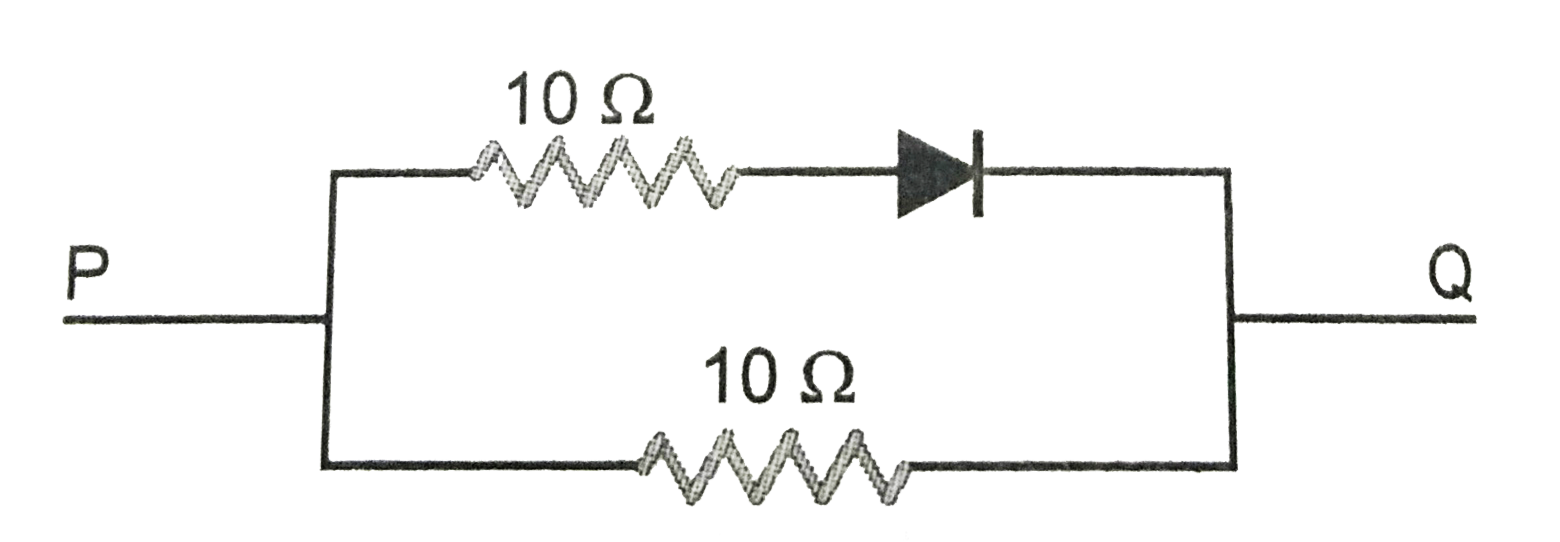Find the equivalent resistance of the network shown in Fig.1 between the point p and Q, when the p-n junction diode used ideal one.

(i) When potential of P is higher than that of Q, the junction diode in circuit is forward biased. Its resistance becomes zero. Now we shall have two resistance in parallel each of 10Ω between points P and Q. Their effective resistance between P and Q is
R=10×1010+10=5Ω
(ii) When potential of P is lower than that of Q, the p-n junction in circuit is reverse biased. Its resistance becomes infinite. No current flows in the arm of p-n junction diode. The current will flow through 10Omega resistance connected in parallel arm to p-n junction diode.
Therefor the resistance of circuit is 10Omega
Topper's Solved these Questions
- ELECTRONIC DEVICESBOOK - PRADEEPCHAPTER - ELECTRONIC DEVICESEXERCISE - SAMPLE PROBLEM
2 Videos
- ELECTRONIC DEVICESBOOK - PRADEEPCHAPTER - ELECTRONIC DEVICESEXERCISE - CONCEPTUAL PROBLEMS
1 Videos
- ELECTROMAGNETIC WAVESBOOK - PRADEEPCHAPTER - ELECTROMAGNETIC WAVESEXERCISE - II Focus multiple choice question
5 Videos
- ELECTROSTATICSBOOK - PRADEEPCHAPTER - ELECTROSTATICSEXERCISE - ASSERTION-REASON TYPE QUESTIONS
2 Videos
Similar Questions
Find the equivalent resistance of the network shown in figure between the points aandb.

View SolutionFind the equivalent resistances of the network shown in figure between the point a and b.

View SolutionFind the equivalent resistance of the networks shown in figure between the points A and B

View SolutionFind the equivalent resistance of the networks shown in Fig. 4.51 between the points A and B.

View SolutionFind the equivalent resistance of the networks shown in figure between the points a and b.





View SolutionFind the equivalent resistance of the networks shown in figure. between the points A and B.

View SolutionFind the equivalent resistance of the networks shown in figure between the points A and B.

View SolutionFind the equivalent resistances of the network shown in figurebetween the points a and b.

View SolutionFind the equivalent resistance of the network shown in figure between point A and B when the p-n junction diode is ideal and:
(i) A is at higher potential.
(ii) B is at higher potential

View SolutionFind the equivalent resistance of the network as shown in Fig 27.48 between points a and b

View Solution
